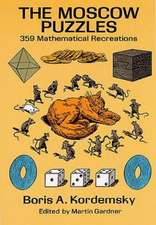Fundamentals of Evolutionary Game Theory and its Applications: Evolutionary Economics and Social Complexity Science, cartea 6
Autor Jun Tanimotoen Limba Engleză Hardback – 6 noi 2015
| Toate formatele și edițiile | Preț | Express |
|---|---|---|
| Paperback (1) | 723.56 lei 6-8 săpt. | |
| Springer – 23 aug 2016 | 723.56 lei 6-8 săpt. | |
| Hardback (1) | 729.53 lei 6-8 săpt. | |
| Springer – 6 noi 2015 | 729.53 lei 6-8 săpt. |
Din seria Evolutionary Economics and Social Complexity Science
- 18%
 Preț: 792.34 lei
Preț: 792.34 lei - 15%
 Preț: 643.84 lei
Preț: 643.84 lei - 18%
 Preț: 723.21 lei
Preț: 723.21 lei - 18%
 Preț: 742.61 lei
Preț: 742.61 lei - 24%
 Preț: 634.34 lei
Preț: 634.34 lei - 15%
 Preț: 639.08 lei
Preț: 639.08 lei - 18%
 Preț: 730.16 lei
Preț: 730.16 lei - 15%
 Preț: 706.48 lei
Preț: 706.48 lei - 15%
 Preț: 583.61 lei
Preț: 583.61 lei - 18%
 Preț: 784.30 lei
Preț: 784.30 lei - 18%
 Preț: 721.01 lei
Preț: 721.01 lei - 15%
 Preț: 527.15 lei
Preț: 527.15 lei - 15%
 Preț: 644.63 lei
Preț: 644.63 lei - 15%
 Preț: 523.22 lei
Preț: 523.22 lei - 15%
 Preț: 638.24 lei
Preț: 638.24 lei - 18%
 Preț: 728.60 lei
Preț: 728.60 lei -
 Preț: 388.90 lei
Preț: 388.90 lei - 18%
 Preț: 737.26 lei
Preț: 737.26 lei - 15%
 Preț: 696.35 lei
Preț: 696.35 lei - 15%
 Preț: 690.11 lei
Preț: 690.11 lei - 15%
 Preț: 692.24 lei
Preț: 692.24 lei - 18%
 Preț: 1006.24 lei
Preț: 1006.24 lei - 24%
 Preț: 570.15 lei
Preț: 570.15 lei -
 Preț: 388.72 lei
Preț: 388.72 lei - 18%
 Preț: 789.52 lei
Preț: 789.52 lei - 18%
 Preț: 1004.81 lei
Preț: 1004.81 lei - 15%
 Preț: 642.68 lei
Preț: 642.68 lei - 18%
 Preț: 730.65 lei
Preț: 730.65 lei - 15%
 Preț: 695.85 lei
Preț: 695.85 lei - 18%
 Preț: 732.52 lei
Preț: 732.52 lei
Preț: 729.53 lei
Preț vechi: 889.68 lei
-18% Nou
Puncte Express: 1094
Preț estimativ în valută:
139.59€ • 146.14$ • 115.51£
139.59€ • 146.14$ • 115.51£
Carte tipărită la comandă
Livrare economică 05-19 aprilie
Preluare comenzi: 021 569.72.76
Specificații
ISBN-13: 9784431549611
ISBN-10: 4431549617
Pagini: 150
Ilustrații: XIII, 214 p. 131 illus., 102 illus. in color.
Dimensiuni: 155 x 235 x 22 mm
Greutate: 0.5 kg
Ediția:1st ed. 2015
Editura: Springer
Colecția Springer
Seria Evolutionary Economics and Social Complexity Science
Locul publicării:Tokyo, Japan
ISBN-10: 4431549617
Pagini: 150
Ilustrații: XIII, 214 p. 131 illus., 102 illus. in color.
Dimensiuni: 155 x 235 x 22 mm
Greutate: 0.5 kg
Ediția:1st ed. 2015
Editura: Springer
Colecția Springer
Seria Evolutionary Economics and Social Complexity Science
Locul publicării:Tokyo, Japan
Public țintă
ResearchCuprins
Chapter 1 Introduction.- Chapter 2 Basic theory of In 2 × 2 games (1 Non-linear dynamical system, 2 2×2 games, 3 Multi-players games).- Chapter 3 Network reciprocity (1 Five fundamental mechanism to add social viscosity, 2 Substantial mechanism of network reciprocity, 3 Discrete, mixed and continuous strategies bring different pictures of network reciprocity).- Chapter 4 Traffic flow analysis dovetailed with evolutionary game theory.- Chapter 5 Risk assessment for infectious disease on voluntary vaccination behavior in complex social networks: Another practical application of evolutionary game theory.
Recenzii
“The book contains a very large number of illustrations and graphs, which are often useful. … it could prove useful to somebody who is already working in the field of game theory, but wishes to learn about possible applications in the other fields, particularly the evolution of cooperation, traffic flow or epidemiology.” (David M. Ramsey, Mathematical Reviews, December, 2016)
Textul de pe ultima copertă
This book both summarizes the basic theory of evolutionary games and explains their developing applications, giving special attention to the 2-player, 2-strategy game. This game, usually termed a "2×2 game” in the jargon, has been deemed most important because it makes it possible to posit an archetype framework that can be extended to various applications for engineering, the social sciences, and even pure science fields spanning theoretical biology, physics, economics, politics, and information science. The 2×2 game is in fact one of the hottest issues in the field of statistical physics. The book first shows how the fundamental theory of the 2×2 game, based on so-called replicator dynamics, highlights its potential relation with nonlinear dynamical systems. This analytical approach implies that there is a gap between theoretical and reality-based prognoses observed in social systems of humans as well as in those of animal species. The book explains that this perceived gap is theresult of an underlying reciprocity mechanism called social viscosity. As a second major point, the book puts a sharp focus on network reciprocity, one of the five fundamental mechanisms for adding social viscosity to a system and one that has been a great concern for study by statistical physicists in the past decade. The book explains how network reciprocity works for emerging cooperation, and readers can clearly understand the existence of substantial mechanics when the term "network reciprocity" is used. In the latter part of the book, readers will find several interesting examples in which evolutionary game theory is applied. One such example is traffic flow analysis. Traffic flow is one of the subjects that fluid dynamics can deal with, although flowing objects do not comprise a pure fluid but, rather, are a set of many particles. Applying the framework of evolutionary games to realistic traffic flows, the book reveals that social dilemma structures lie behind traffic flow.
Caracteristici
Provides a compact but comprehensive explanation of the fundamental theory for 2 × 2 games Describes in a deliberate manner the substantial mechanism working behind network reciprocity for 2 × 2 games Demonstrates how analyses of traffic flow and epidemiology are applications that dovetail evolutionary games and engineering topics















